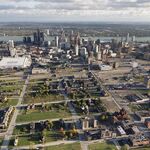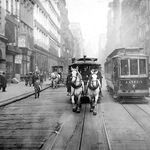1400 kilometres north of the Windy City, Winnipeg is home to an impressive collection of commercial architecture from the turn of the last century that has won 'The Peg' the somewhat lesser-known designation of 'Chicago of the North.' Rivalling Saskatoon's claim to fame as the 'Paris of the Prairies,' Winnipeg's 'Chicago of the North' moniker serves its city more faithfully, as the architecture in Winnipeg's historic Exchange District is inextricably linked to the worldwide influence of the Chicago School of Architecture. This edition of Cityscape will explore the intricate architectural connection between Winnipeg's Exchange District and the set of architectural guidelines and philosophy that have become synonymous with Chicago.
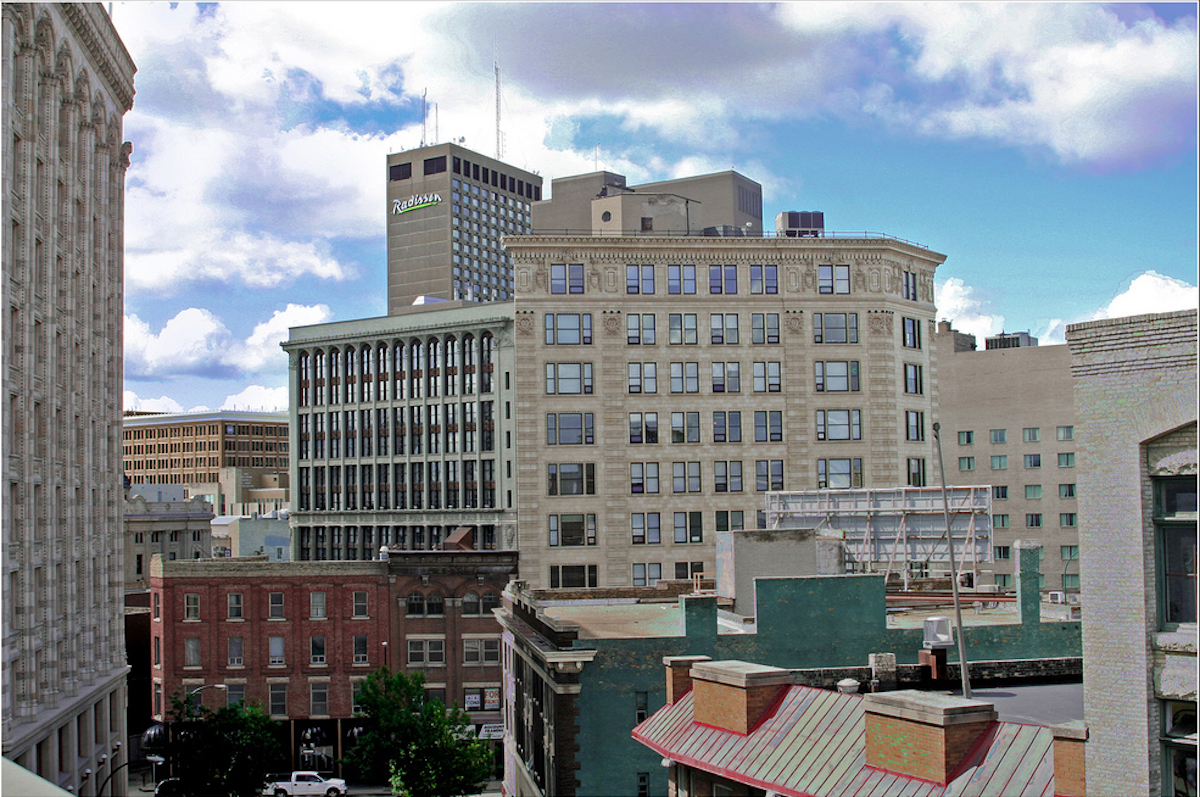 Winnipeg Exchange District, image by Wpg guy via Wikimedia Commons
Winnipeg Exchange District, image by Wpg guy via Wikimedia Commons
Initially the site of the Winnipeg Grain Exchange, which operated for nearly a century from its establishment in 1887 to its dissolution in 1986, what is now known as the Exchange District was once the centre of Canada's grain industry. It was also the financial heart of Western Canada throughout the heyday of Winnipeg's late-nineteenth-to-early-twentieth-century boomtown years. From the end of the nineteenth century to the First World War, Winnipeg, similar to Chicago to the south, was one of the fastest growing cities in North America.
 Exchange District, Winnipeg, Manitoba, image by Flickr user AGalland via Creative Commons
Exchange District, Winnipeg, Manitoba, image by Flickr user AGalland via Creative Commons
Lying just north of Winnipeg's well-known Portage and Main intersection, the Exchange District was city's original financial centre and business district, much in the same way that Old Montreal once was the commercial centre of that city prior to the early twentieth century. Home to more than 150 historic warehouses, banks, and office towers built between approximately 1880 and 1920, the Exchange District became a National Historic Site in 1997. The area is unique within the surrounding urban context of downtown Winnipeg for its largely intact and consistent architectural heritage, especially amid a broader cityscape which has changed dramatically over the last half century.
 Exchange District, streetscape, image by Flickr user AJ Batac via Creative Commons
Exchange District, streetscape, image by Flickr user AJ Batac via Creative Commons
The architectural influence of nearby Chicago (near in relative terms to cities of a similar size within Canada or the United States), is today one of the defining legacies of the Exchange District, the largest such 'Warehouse District' of its type in Canada owing much to the Chicago School of Architecture. Clad in a mixture of terra cotta and brick facades, many structures within the Exchange District were either designed by Chicago architects practising in Winnipeg, or by local Winnipeg firms whose architects, including, Charles H. Wheeler, James H. Cadham, Geroge Browne, S. Frank Peters, and John H. G. Russell, had been either trained in or heavily influenced by the Chicago School.
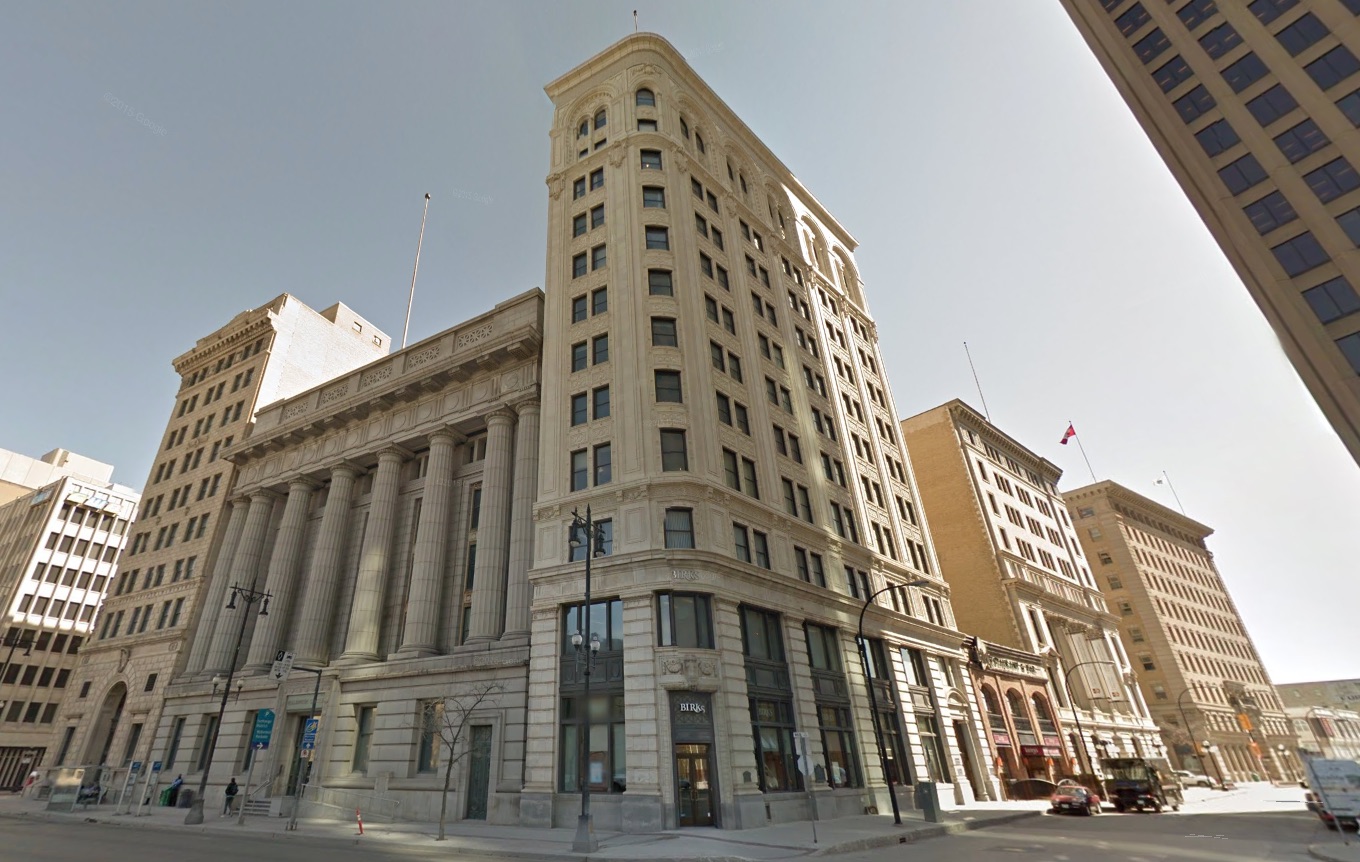 Union Trust Tower (1915), by John D. Atchison, Lombard and Main, image via Google Street View
Union Trust Tower (1915), by John D. Atchison, Lombard and Main, image via Google Street View
Looking directly into the heart of the Exchange District in the image above, the corner of Lombard and Main demonstrates the impact of the Chicago School of Architecture in Winnipeg as the majority of the buildings pictured in this block were directly influenced by trends then unfolding in the Windy City. Front and centre (and again in detail below), the distinctly narrow steel-frame Union Trust Tower is clad in a white decorative terra cotta finish, featuring Italian Renaissance detailing. Designed by ex-pat Chicago architect John D. Atchison, who moved his practice to Winnipeg in the early 1900s, the Union Trust Tower is representative of the work of Winnipeg's foremost Chicago School architect.
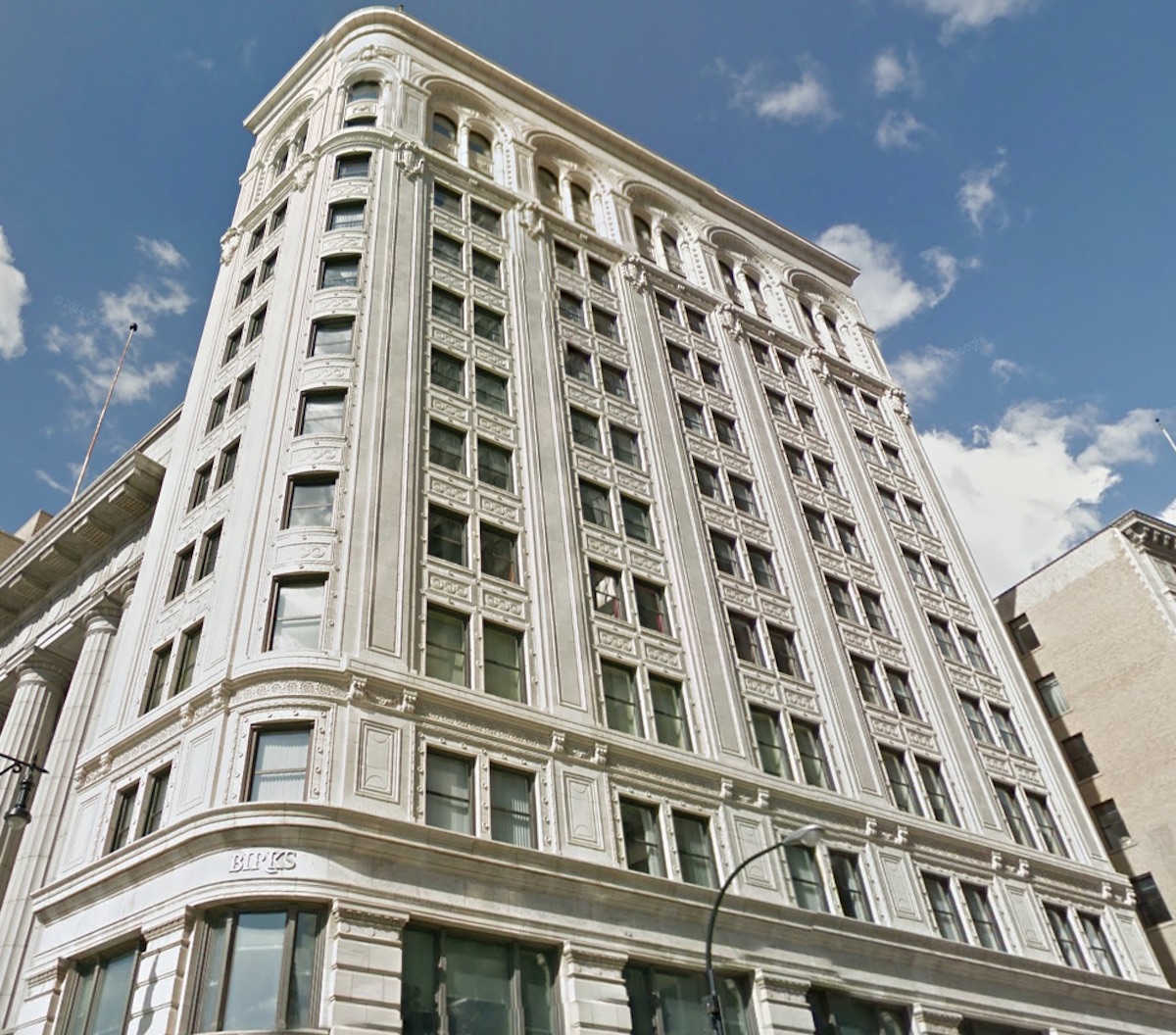 Union Trust Tower, close-up view, image retrieved via Google Street View
Union Trust Tower, close-up view, image retrieved via Google Street View
To the immediate left of the Union Trust Tower, the Canadian Bank of Commerce (1910-12) at 389 Main Street was designed by Toronto's Darling & Pearson in a classical Greek Revival style, complete with Doric columns and a high emphasis upon symmetry. While the Canadian Bank of Commerce is not a product of the Chicago School, the Bank of Hamilton (1916-18), to its left at 395 Main Street, stands as yet another example of Atchison's work, notable as the last building of significance to be built along Main Street prior to the First World War. Another Rennaissance-influenced example of Chicago School commercial architecture, the limestone-clad structure features significant exterior and interior detailing; the main banking hall welcomes visitors with a marble-and-bronze-wrapped mezzanine, a painted coffered ceiling, and an elliptical marble staircase.
 Bank of Hamilton (left), and Canadian Bank of Commerce (right), image retrieved via Google Street View
Bank of Hamilton (left), and Canadian Bank of Commerce (right), image retrieved via Google Street View
Seen below, the Confederation Life Building is one of the finest Chicago School buildings in the Exchange District. Built in 1912 by the Toronto-based architect, J. Wilson Gray, the unusual curved steel-frame structure at 457 Main Street is clad in white terra cotta with a base of polished granite.
 Confederation Life Building by night, image by Flickr user briYYZ via Creative Commons
Confederation Life Building by night, image by Flickr user briYYZ via Creative Commons
From the rectilinear bays of deep-set sash windows, to the overall column-effect of the tower's exterior composition in which there is a defined base, middle, and cap, the Confederation Life Building exhibits many of the traits directly linked to the Chicago School of Architecture.
 Confederation Life Building, close-up view, image by Flickr user seniwati via Creative Commons
Confederation Life Building, close-up view, image by Flickr user seniwati via Creative Commons
Across Main Street from the Confederation Life Building, the 1904-built Union Bank Tower and Annex (1921 addition) stands as both the first steel-frame skyscraper in Winnipeg and as the oldest such structure to be found in Canada today. Designed via a collaboration between Toronto's Darling & Pearson and Winnipeg's W. Percy Over, the 11-storey tower also represents the oldest Chicago School style skyscraper in the city. The terra cotta-clad base is visually extended up the entire height of the tower in the form of a heavily bracketed terra cotta cornice and cap.
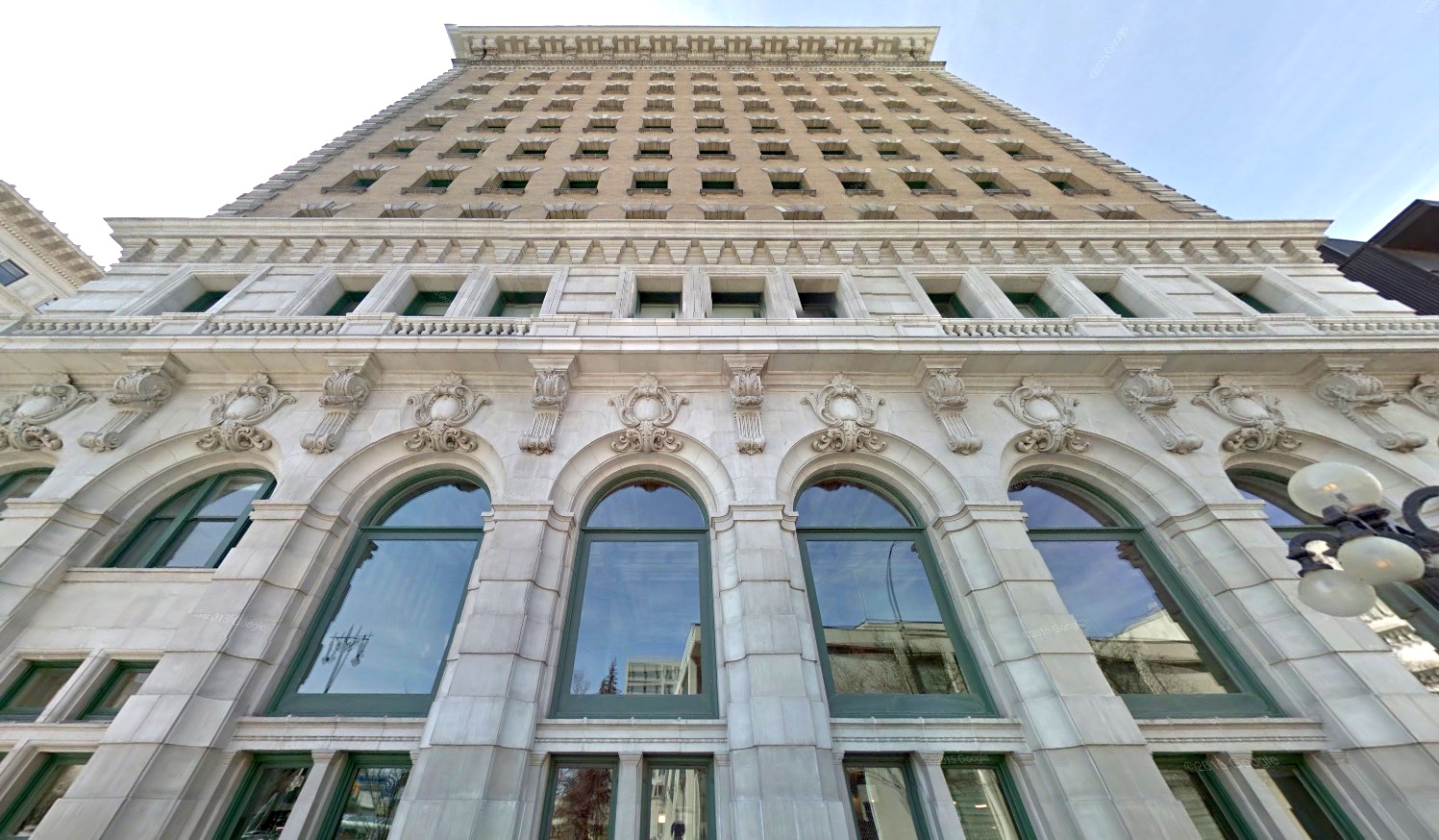 Union Bank Tower and Annex (1904/21), by Darling & Pearson/W. Percy Over, image via Google Street View
Union Bank Tower and Annex (1904/21), by Darling & Pearson/W. Percy Over, image via Google Street View
Following the construction of the Panama Canal in 1913, which dramatically affected rail and freight patterns, and the end of the First World War in 1918, Winnipeg's upward trajectory began to falter. Beginning with the mass civil unrest in the city leading up to the Winnipeg General Strike in 1919, and finalized by the desperate financial conditions of the Great Depression, Winnipeg's time in the sun was cut short. The city soon fell into a sustained period of lacklustre growth. While it was likely more curse than gift at the time, Winnipeg's stalled growth during this period allowed for the preservation of many of the Exchange District's 150 heritage structures. The forgotten corner of downtown Winnipeg was spared the destructive forces of postwar urban renewal that befell the majority of historic buildings that once defined the streetscapes of Portage and Main.
 Uninterrupted block of historic structures along Bannatyne Avenue, Exchange District, image by Interlaker via Wikimedia Commons
Uninterrupted block of historic structures along Bannatyne Avenue, Exchange District, image by Interlaker via Wikimedia Commons
Today the Exchange District is home to the city's best restaurants, cafes, bars, and shops, in addition to the Manitoba Museum, Planetarium, and Science Gallery. It is also home to Winnipeg's Theatre District, which includes the Manitoba Theatre Centre and Centennial Concert Hall, home of the Winnipeg Symphony Orchestra, the Royal Winnipeg Ballet, and the Manitoba Opera. Busy through the summer months, the Old Market Square is host to the Winnipeg Jazz Festival, the Winnipeg Fringe Festival, and the Manitoba Electronic Music Exhibition. Completed in 2008, The Cube forms the main stage for these events, with the surrounding public park and square acting as a popular urban destination for locals and tourists alike.
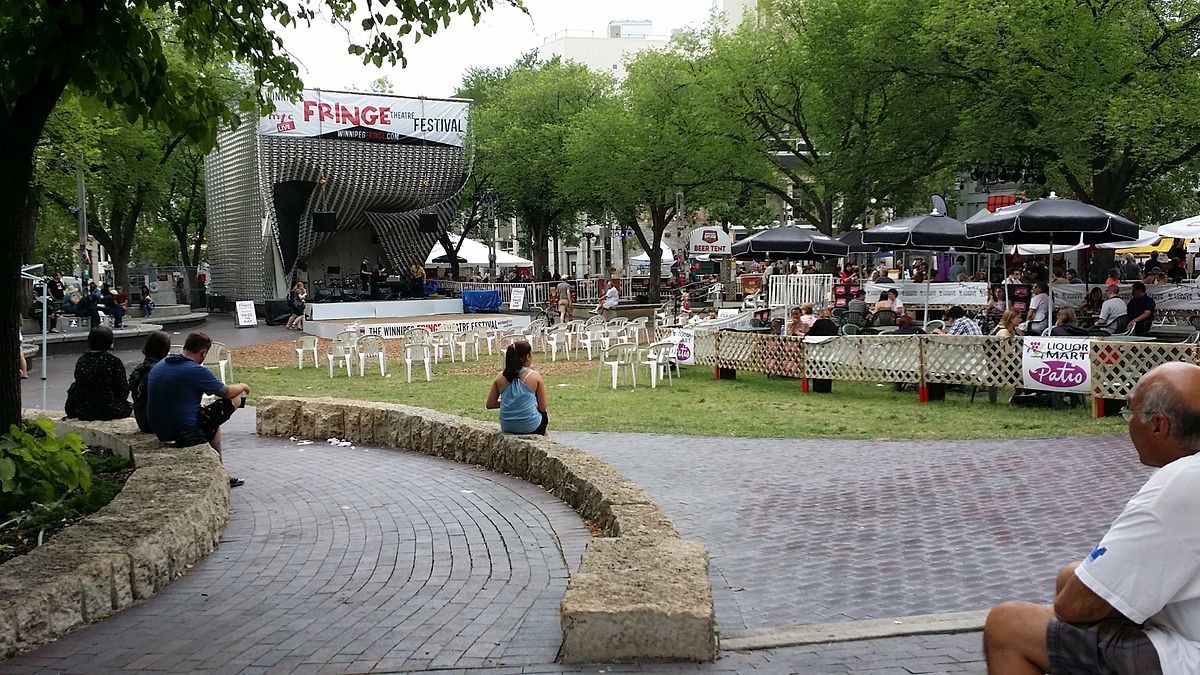 Market Square and The Cube, during the Winnipeg Fringe Festival, image by Ccyyrree via Wikimedia Commons
Market Square and The Cube, during the Winnipeg Fringe Festival, image by Ccyyrree via Wikimedia Commons
More than just a collection of impressive, turn-of-the-last-century warehouses, banks, and office towers, the architectural quality and interlinking cohesion of the structures of the Exchange District create a direct link to Winnipeg's past.
For more Winnipeg coverage check out the associated City page, and as always, feel free to join the conversation in the comments section below. Cityscape will return soon with a new installment, and in the meantime, SkyriseCities welcomes new suggestions for additional cities and styles to cover in the weeks to come.

 7.4K
7.4K 


















